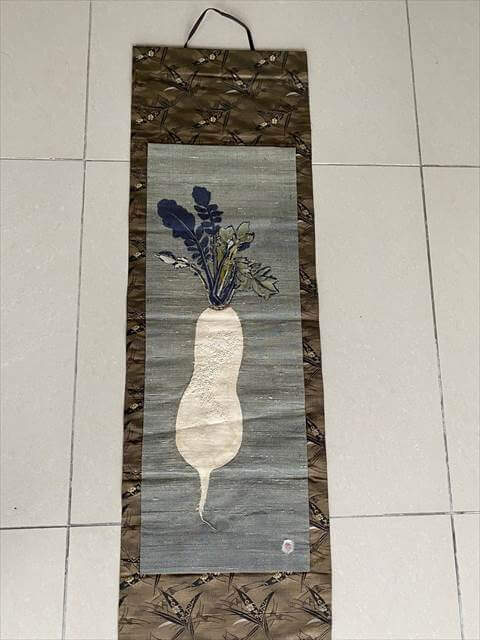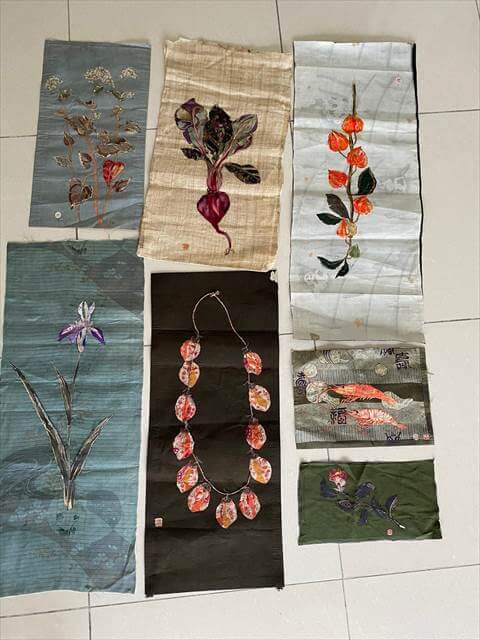Japanese Hanging Scroll Craftsmanship Shines: Create a Tapestry from an Embroidered Work

Our company specializes in the creation of hanging scrolls, and we often receive various inquiries from around the world, relying on our expertise and knowledge in this field.
Recently, we received an unusual commission from Malaysia.
The client is a woman living in Kuala Lumpur.
During a visit to Kamakura, Japan, she purchased several tapestry-like fabric crafts and what seemed to be embroidered works, intended as materials, from a gift shop.

Tapestry-like crafts

Embroidery Works
She had always wanted to have these embroidered works fashioned into a form similar to the tapestries she bought but had difficulty finding someone with the necessary expertise.
In her search, she discovered our company, specializing in hanging scroll production, on the Internet and reached out to us via email.
The commission involved eight embroidered works of varying sizes.

She wanted these works to be crafted into tapestries similar to the samples she had, for display in her dining room.
Although it is not possible for us to produce a product that perfectly matches the sample, we decided that with our skills and knowledge of hanging scrolls, we could produce a product that is quite close to the sample. We proceeded with the commission after ensuring the customer understood this.
However, several challenges arose in the process of adapting these embroidered works into tapestries similar to the sample.
These embroidered works were made of thick cloth, not the thin ones used for normal hanging scrolls, and when they were rolled up with their mounts in the originally planned process, various problems occurred, such as wrinkles.
To overcome these troubles, we repeatedly adjusted the thinness and strength of the mounting fabric, striving to find the optimal condition. Finally, the tapestries were completed.
The production took longer than expected, but ultimately, the beautiful works were completed to the customer’s great satisfaction.
Our company aims to continue delivering our diverse expertise and knowledge in hanging scrolls not only to Japan but also internationally, hoping to be helpful in various situations.
Please feel free to consult us anytime if you encounter any difficulties, as we will continue to improve our services.

